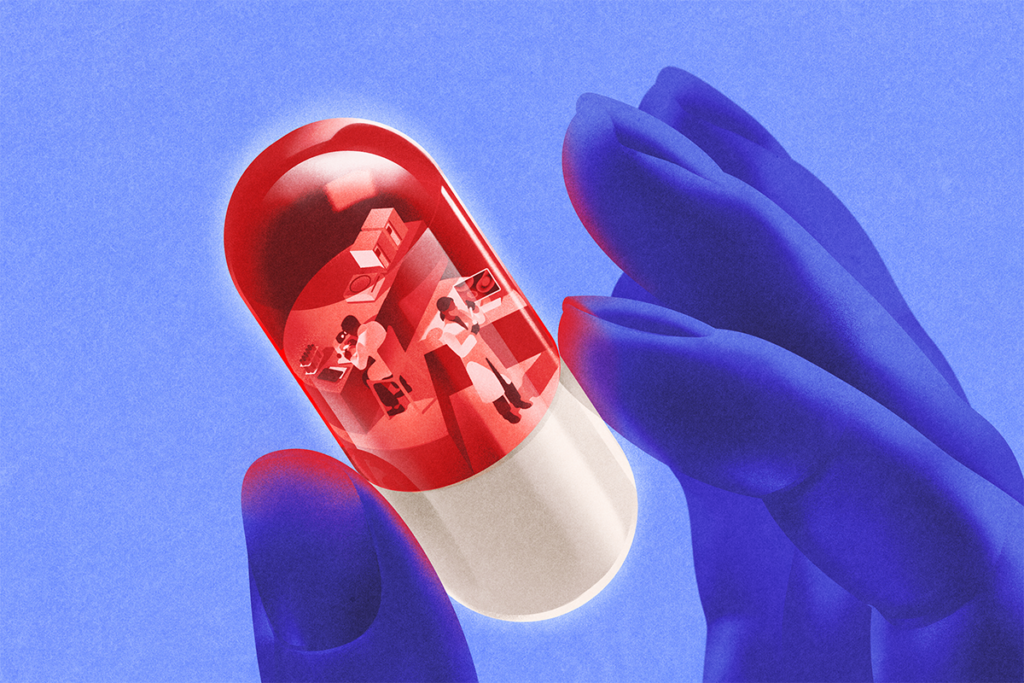
Transition to adult healthcare is often challenging for autistic children
Less than 9 percent of autistic adolescents in the United States receive the recommended guidance on the transition from pediatric to adult healthcare.
Adolescents with autism are the least likely among young people with mental, behavioral and developmental conditions to receive guidance from their doctor on the shift from pediatric to adult healthcare, according to a new study by the United States Centers for Disease Control and Prevention (CDC)1.
Only about 9 percent of autistic adolescents received transition planning, compared with about 20 percent of those with emotional conditions and 15 percent of those with behavioral conditions.
This nationally representative study is the first to focus on transition healthcare planning for children with specific mental, behavioral and developmental disorders (MBDDs), says lead investigator Rebecca Leeb, a health scientist at the CDC National Center on Birth Defects and Developmental Disabilities.
“The reason that we did this study was to look and see whether children with mental, behavioral and developmental disorders were doing any better with making this transition planning than kids overall,” Leeb says.
About 16 percent of adolescents with MBDDs, and about 14 percent without, received the recommended transition-planning guidance, the analysis found.
“That’s extremely low. That’s the big take-home,” says Lisa Croen, director of the Kaiser Permanente Autism Research Program in Oakland, California. “The other big take-home is that for certain groups of young people, the rate of adequate transition planning is even lower, specifically the adolescents with autism spectrum disorders.”
Transition planning:
Leeb and her colleagues analyzed data from 29,286 adolescents, aged 12 to 17, from the National Survey of Children’s Health conducted in 2016 and 2017. More than 7,500 have an MBDD — about 3,200 had a developmental disorder and 887 were autistic.
The researchers assessed transition planning based on three criteria set forth by the Maternal and Child Health Bureau: Adolescents had spoken alone with their primary care provider at their most recent preventive check-up; the doctor had given them guidance about health management and helped them understand healthcare changes that occur at age 18; and the doctor had discussed the shift from a pediatric to an adult healthcare provider.
Meeting all three measures means a child has the skills and knowledge to make the switch to adult healthcare more seamless, Leeb says.
Adolescents with MBDDs were categorized as having a behavioral condition, such as attention deficit hyperactivity disorder; an emotional condition, such as anxiety or depression; or a developmental condition, such as autism or intellectual disability. Parents or guardians reported the severity of their child’s MBDD and any treatments the child received, as well as whether their child met the three criteria for transition planning.
About one in six adolescents with an MBDD received the recommended amount of transition planning, Leeb says. Adolescents with autism were the least likely to receive transition planning. Across all MBDD groups, the proportion of young people getting enough transition planning increased with age, suggesting that primary care providers might often wait to talk about adult healthcare until a child is about to make the switch. The American Academy of Pediatrics recommends that providers start this support at about age 12, Leeb says. The findings were published in August in the CDC’s Morbidity and Mortality Weekly Report.
“I think this provides a lot of information looking at specific subgroups of adolescents,” Croen says. “I haven’t seen that broken out like that before.”
Filling the gap:
The study is limited in that the survey relied on parent reports, Leeb says. And it offers no insight about why adolescents with autism or other developmental disabilities are unlikely to meet the transition-planning measure.
“This is an important question for future research,” she says.
Young people with autism or other MBDDs are more likely to have ongoing healthcare needs and challenges around coordinating care than are those in the general population, Croen says. Having a designated care coordinator could help them and their families manage the transition better.
Primary care providers might also help bridge the gap by receiving better training on the unique needs of adolescents, and by organizing co-management opportunities with adult healthcare providers, Leeb says.
Installing transition-planning resources within electronic medical-record systems might also help, Croen says. “Everyone plays a role,” including families and young people.
Next steps for this research include digging deeper into the data to consider insurance status, Leeb says, along with “looking at ways that healthcare providers, public-health professionals and parents make sure that kids have the tools and skills to face the challenge successfully.”
References:
- Leeb R.T.et al.MMWR Morbid. Mortal. Wkly Rep. 69, 1156-1160 (2020) PubMed
Recommended reading

Among brain changes studied in autism, spotlight shifts to subcortex
Home makeover helps rats better express themselves: Q&A with Raven Hickson and Peter Kind
Explore more from The Transmitter

Frameshift: Shari Wiseman reflects on her pivot from science to publishing

How basic neuroscience has paved the path to new drugs

